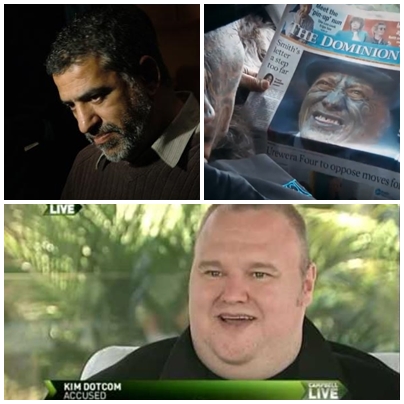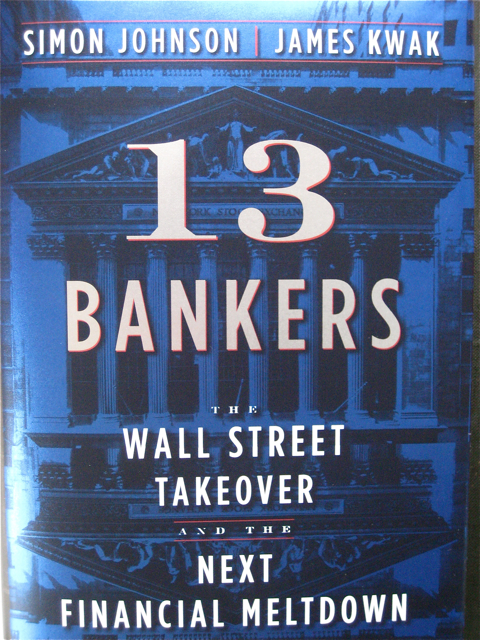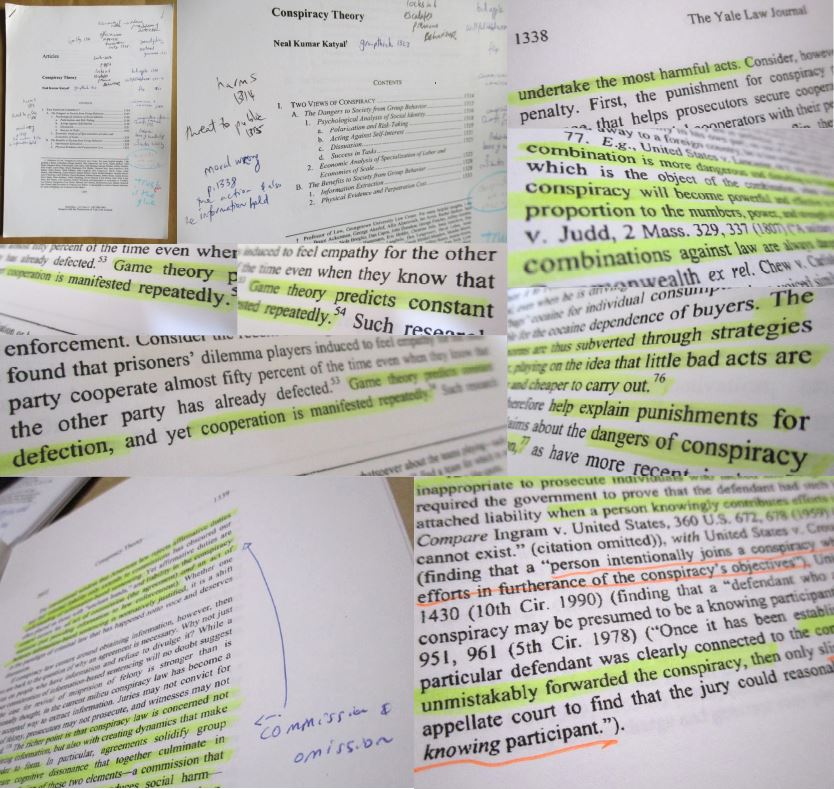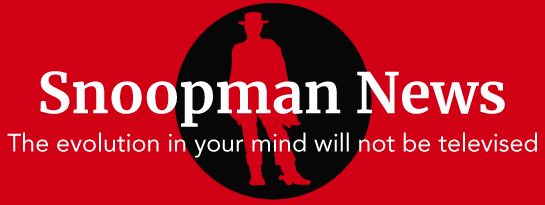Introducing the N.Z. Deep State’s multi-season news specials

Three-part investigation on Ahmed Zaoui, Tame Iti and Kim Dotcom
In a post-9/11 atmosphere of fear, Western states were pressured to adopt legislative measures for surveillance, search, and seizures.
Nationally based security state institutions gained more power to make incursions into land, life and liberty — despite there already being sufficient laws and resources for law enforcement.
Amid a heightened state of alert to possible threats of terrorism, this intensification of Police State legislative power aided an expansion of funding and abetted a treadmill of spook-grid technologies and enabled New Zealand’s national security state to make serious intrusions into the everyday lives of citizens, asylum seekers and even highly-skilled immigrant residents, workers and contractors.
The state’s intrusion into peoples’ lives occurred not only for the sake of maintaining or gaining more police state power. It occurred as a matter of self-preservation by a Deep State criminal elite network embedded within the national security state. This self-preservation coincided with the self-preservation of the Clark Ministry, Crown officials and continued into the Key Ministry — whom were part of the Deep State, or were captured by it or whom joined it enthusiastically and unwisely.
This investigation traces three of the New Zealand Crown’s high-profile persecutions that belie a capture by the national security state apparatus. On the surface, the detainment of an Algerian-born Muslim asylum seeker in the post-9/11 universe appears as merely an overly cautious national security state out of its depth dealing with someone flagged as a terrorist (by the same three intelligence involved in the 1985 Rainbow Warrior Bombing).
This multi-year persecution of Ahmed Zaoui was followed by a convergence of crises that amplified mutual self-preservation needs of the national security state, the Clark Administration and the nebulous entity known by the alias, ‘the Crown’, that represented both defined and undefined powerful interests that collectively claim sole sovereign status over New Zealand’s islands and the world’s sixth largest maritime territory.
And finally, an external national state apparatus — the American Deep State — exploited the Crown’s addiction to ‘multi-season news special psy-ops’. The first of the Crown’s three high-profile persecutions were inflicted upon Algerian asylum seeker Ahmed Zaoui, from December 4 2002 to September 13th 2007.[1] The second was inflicted primarily upon Tūhoe theatrical activist Tame Iti from October 15 2007 to February 26th 2013.[2] And the third persecution wass inflicted upon a German-born internet magnate, Kim Dotcom, from January 20 2012 and is ongoing.[3]
Consequently, the entire New Zealand population has been subjected to psychological warfare in the form of multi-season news specials. Each multi-season news special spans several years, drawing upon crisis journalism strictures. The key characteristics of this crisis news genre are:
(1) Reporters whom maintain a respectful distance from key crisis actors;
(2) News outlets reproduce official propaganda on a presumptive accuracy basis; and
(3) Newsrooms pull punches as key protagonists perform crisis rituals to exploit crises.
These crisis rituals, range from reactive arrests, improvised surveillance, and illegal searches, to well-planned raids, stage-managed media conferences, and court-room set-pieces. The resultant multi-season news specials are akin to Hollywood B-Grade political thrillers, with dystopian sci-fi riffs and darkly satirical self-referential codified communications that are designed to signal the authorship of Deep State actors.
The Lens: Game theory as a theoretical framework to detect power crimes
The examples of Zaoui, Iti and Dotcom — as state persecutions — offer exquisite case studies for criminal law students to re-examine the Neo-Colonial Deep State’s plotting also as power crimes.
To examine the role of key deep state players who advance plots to inflict multi-season psy-ops as subterfuge for vexatious criminal proceedings, game theory has been applied. In game theory, ‘posting a hostage’ is a mechanism to construct stability and is predicated on a provisional promise to cooperate if other players post hostages too. The game requires an implied threat, which amounts to defection on the next move if the other player does not post a hostage too. Without such hostage postings, there would be defections on the next move.
In their paper, “Resolving social conflicts through hostage posting: theoretical and empirical considerations,” Gideon Keren and Werner Raub noted that “tacit communications of threats and promises are two major message strategies used to influence the behaviours of others”.[4] Deep state actors embed events with Easter Eggs’ — as they have been termed — like signature droppings to signal the work of deep state rabbits.
The vexatious criminal proceedings that formed the basis of the multi-season psy-op news specials even came packaged with Easter Bunnies, ‘Easter Eggs’ and tin-foil conspiracy wrappings designed to deflect attention from the real Deep State Easter Bunny script-writers — either foreign and domestic.
Like all criminal plots, the tin-foil conspiracy wrappings became more crinkled as the facts and evidence are scrutinized and the chocolate treasure contents are found to be stuffed with barely legal sugary food-like substances, or simply hollow.
Brazenly, such Easter Bunnies embed their Deep State events with self-referential ‘Easter Eggs’ to signal solidarity, communicate caution to key insiders to not investigate too hard, and to take the cues of who is scripted for scape-goating to resolve the underlying deep structural crisis that the Deep State Overlords face.
And above all — emotionally hijack the secondary targets of propaganda: news audiences.

One such recurring Easter Egg is the curious prime number ‘Thirteen’ that masquerades in mundane data in dates, quantities and locations — like an aggressive attention-seeking teenager who has not yet worked out that the essence of ‘being cool’ is kindness. To a secret New Zealand fraternity, dominated by men, whom are aligned with their international counterparts, the recurrence of the number 13, and its multiples, works as a way for members of this hidden network to find, communicate and work with each other — as conspiracy theory as its sounds. By embedding events with ‘Thirteen’, coalitions of élites signal unity among a brotherhood; that they are advancing a syndicate game to signal promises and threats, telegraph caution and control in the inevitable scandals, while exploiting crises. If other players are not seen to be posting themselves as ‘hostages’ with such encoded signalling — defections can be expected on the next moves, as game theory predicts.
The practice of embedding events with the number 13 came to my attention when I read Simon Johnson and James Kwak’s book, 13 Bankers: The Wall Street Takeover and the Next Financial Meltdown.[5] Johnson and Kwak did not explicitly state why exactly elites embed events with this curious prime number; they only noted its curious recurrence and hence the title of their excellent book. The phenomena of the number 13 used to symbolize a financial oligarchy is more explicitly explored in my groundbreaking thesis, “It’s the Financial Oligarchy, Stupid”.[6] The appearances of number 13 in institutional data does not necessarily mean that the nominal head of the institution is a member of a Fraternity, or that everyone who reproduces such data belongs to a Brotherhood. However, this recidivist prime number signifies a Brotherhood’s hand.
For example, SIS Director Warren Tucker freed Ahmed Zaoui on the Brotherhood’s favourite day of any month September the 13th in 2007. This date signalled caution. It gets worse.
The Operation Eight raids that created the myth of a guerilla terrorist network to frame Tame Iti, took place 13 months after Mr Iti’s name was added to the case file on 13 September 2006. In the drawn out legal proceedings that resulted from the Operation Eight Raids, the charges against 13 of the 18 accused were dropped on 6 September 2011. And when the case that eventuated against the ‘Urewera Four’ – THE QUEEN v TAME WAIRERE ITI, TE RANGIKAIWHIRIA KEMARA, URS PETER SIGNER & EMILY FELICITY BAILEY — and it was presided over by only one judge — it commenced on February 13th 2012.
And, in the FBI-instigated Megaupload Raids of January 20 2012, KIM DOTCOM, who was said to weigh 130 kilograms was arrested, and the illegal seizures involved over 130 computers, and the take-down of Megaupload, which had been ranked as the internet’s 13th most frequently visited website. And, the raids also embroiled New Zealand’s public state in a multi-season news special covering the episodic extradition battle — on 13 counts involving alleged copyright infringement, money laundering, wire fraud racketeering.
In this multi-part investigation, I show how and why Ahmed Zaoui became the New Zealand Crown’s poster-boy for a Global War on Terror multi-season psy-op news special; and how and why Tame Iti became the next poster boy; and then how and why Kim Dotcom was framed as the national security state’s new cause célèbre.
The New Zealand Deep State’s mission creep in switching from one poster-boy of their derivative Global War on Terror multi-season news special, to another — is entirely predictable by scholarly conspiracy law theory, pertaining to political conspiracies and economic collusion.
In his Yale Law Journal paper “Conspiracy Theory”, Neal Katyal argued that a “sunk cost trap” dynamic is created when people commit to a specific course of action that binds them and “escalates previous behaviour”.[7] Consequently, corrective action by colluding players to serve their secret goals, or “enjoinable conduct,” can be expected to surface in the news. Enjoinable conduct can take the form of direct communications such as meetings and conference calls, confidentiality agreements between political parties or players, out-sourced political assets and encoded messaging to communicate threats and promises to stabilize a crisis. It is in the fusion between the commissioning of a conspiracy that furthers an elite criminal group’s identify and the omission of facts and avoidance of un-sanitized evidence that produces the social harm – that public institutions need to focus on.

Elite groups construct criminogenic environments to orchestrate power crimes by exploiting the speed of fast-moving constructed events. Such elite criminal group behoove the development of investigative modelling tools, information extraction strategies and disruptive mechanisms to mitigate their power criminal group formation, visibly prosecute and contain in facilities. Indeed, in a 1993 Journal of Contingencies and Crisis Management paper, crisis management expert Paul ’t Hart observed powerful groups use the media to relay information to “crisis stakeholders”. In his article entitled – “Symbols, rituals and power: The lost dimensions of crisis management” — ’t Hart explained that a ‘crisis’ “creates a self-binding dynamic,” since the act of characterization is rhetorical and lends itself to semantic descriptions.[8]
Elite criminals who practice fraud, corruption and terrorism, argues Monash University senior lecturer of international law Eric Wilson, “optimize” their power and prestige through the construction of networks that work to minimize the risks of detection and maximize the payoffs.[9] By exploiting speed, criminal elites and oligarchs are able distort perceptions about the facts of events and why they occur. Thus, “low velocity political deliberation and public accountability” is overtaken by high-velocity events created by highly-networked private interests. It is in this way, that “politics ‘disappears into aesthetics’ ” — as Eric Wilson puts it. In this process, the splicing of space and time and kinetic image sequences mask “speed-politics” with a copy of reality. Thus, the Establishment Media, acting as ‘vectors’ or transmitters of ‘emotional contagion’, assist the ‘speed-politics’ that underpin such ‘crises,’ amid an ‘atmosphere of catastrophe.’
The following cases offer exquisite insights into how intelligence and security services can frame people to justify pre-emptory and peremptory actions on a spectrum from character assassination to actual assassination. Where a pre-emptory strike — as popularized by American Deep State President Bush II — is perpetrated before law can be established in a jurisdiction, a peremptory action is designed to stymie debate on important issues and admit no contradiction.
In all three cases, the primary ‘targets’ were locked up for a period before they were granted bail, thereby affording the national security state an open season to deploy their propaganda through the news media. In the opening phase of the Neo-Colonial State’s cases against all three poster boys — Ahmed Zaoui, Tame Iti and Kim Dotcom — were locked up for a period that effectively stymied debate and admitted no contradiction.
Therefore, a key finding of this investigation that in this post-9/11 War of Terror era, national security states require extended lock-up periods in the opening phase of persecution as peremptory action mechanism to fix the multi-season psy-warfare news specials with a limited frame of discussion designed to brainwash news audiences to hate the latest scapegoat.
——-
Psy-warfare from Zaoui to Iti to Dotcom Part 1:
Lt. Colonel Samraoui’s character assassination of Zaoui
https://snoopman.net.nz/2018/10/17/psy-warfare-from-zaoui-to-iti-to-dotcom-part-1/
Psy-warfare from Zaoui to Iti to Dotcom Part 2:
Tame Iti as the Crown’s new scapegoat to resolve multiple crises
https://snoopman.net.nz/2018/10/26/psy-warfare-part-2/
Psy-warfare from Zaoui to Iti to Dotcom Part 3:
Hollywood’s make-believe villain, Kim Dotcom (alias Kim Kimble)
https://snoopman.net.nz/2018/11/17/psy-warfare-from-zaoui-to-iti-to-dotcom-part-3-hollywoods-make-believe-villain-kim-dotcom-alias-kim-kimble/
Source References:
[1] Selwyn Manning (2012). Behind the Shroud: Truth, Intelligence & Tradecraft. Lone Wolf Films. Retrieved from https://www.youtube.com/watch?v=9RhP2I7KqH0
[2] Snoopman. (17 October 2017). Weaving Quilts: How & why Tame Iti’s ‘Uprising’ Fantasy fed the NZ Deep State’s B-Grade Five Season Terror Plot Frame-up Job. Retrieved from https://snoopman.net.nz/2017/10/17/weaving-quilts-or-why-tame-itis-uprising-fantasy-fed-the-states-b-grade-terror-plot-frame-up-job/
[3] Annie Goldson. (2017). Kim Dotcom: Caught in the Web. Retrieved from
[4] Keren G. & Raub W. (1993). Resolving social conflicts through hostage posting: Theoretical and empirical considerations. Journal of Experimental Psychology, 12, 429-448. doi:10.1037/00963445.122.4.429
[5] Simon Johnson and James Kwak (2010). 13 Bankers: The Wall Street Takeover and the Next Financial Meltdown. Retrieved from https://13bankers.com/
[6] Steve Edwards. (2012). It’s the financial oligarchy, stupid: A study of Anglo-American news coverage during the 2007-2008 financial crisis and bank bailouts. Retrieved from http://hdl.handle.net/10292/5536
[7] Katyal, N. K. (2002). Conspiracy theory. The Yale Law Journal, 112, 1307-1398. Retrieved from http://yalelawjournal.org/
[8] ’t Hart, P. (1993). Symbols, rituals and power: The lost dimensions of crisis management. Journal of Contingencies and Crisis Management, 1, 36-50. Retrieved from http://www.wiley.com/bw/journal.asp?ref=0966-0879
[9] Wilson, E. (2009). Speed/pure war/power crime: Paul Virilio on the criminogenic accident and the virtual disappearance of the suicidal state. Crime, Law & Social Change, 51, 413-434. doi:10.1007/s10611-008-9168-7; Wilson, E. (2010, February). Crimes against reality: The global credit crisis, simulation, and criminogenic cyber-capitalism. Paper presented at the International Studies Association Annual Convention, New Orleans, LA. Retrieved from International Studies Association website: http://convention2.allacademic.com/one/isa/isa10/; Wilson, E. (2011). Criminogenic cyber-capitalism: Paul Virlio, simulation, and the global financial crisis. Springer Science+Business Media. doi: 10.1007/s10612-011-9139-7.

